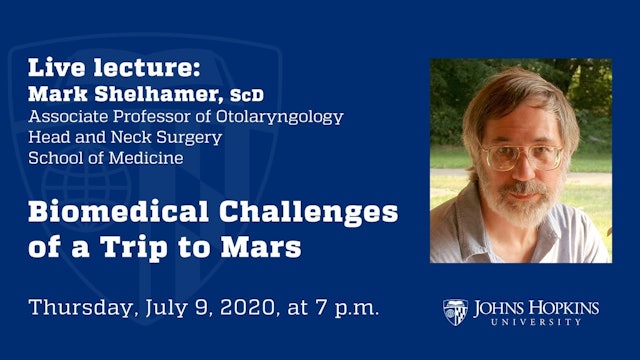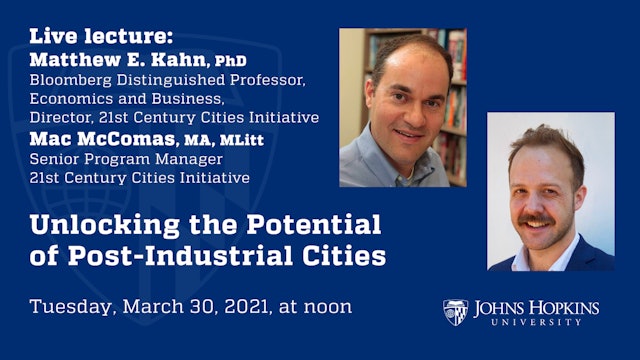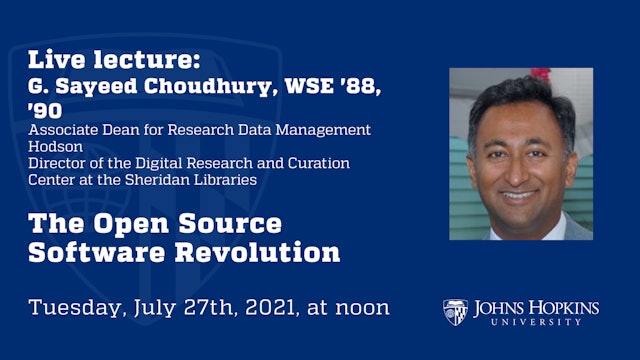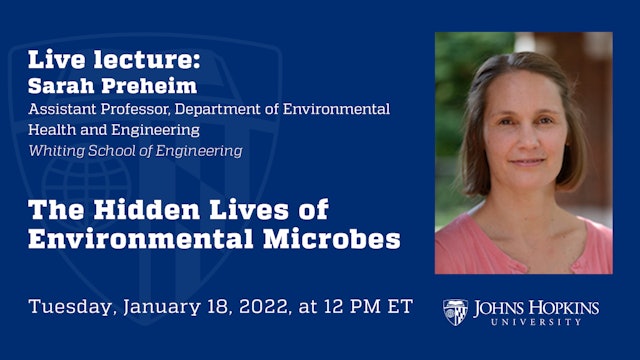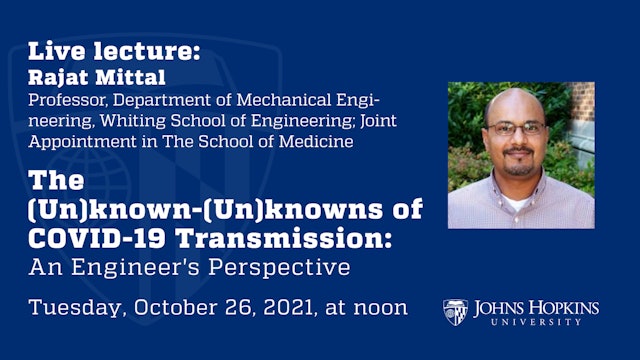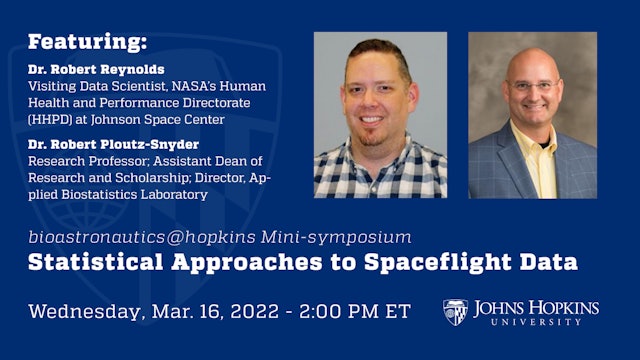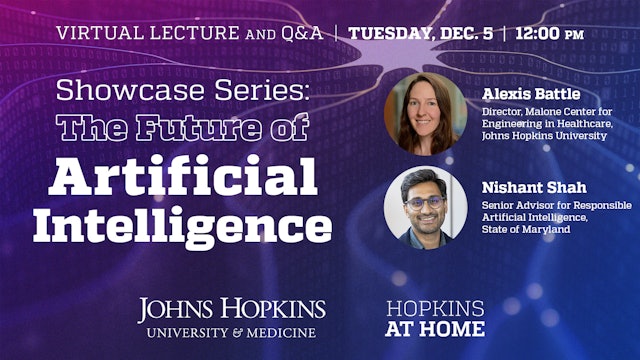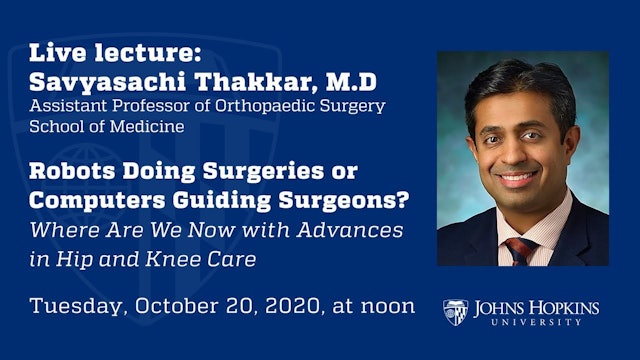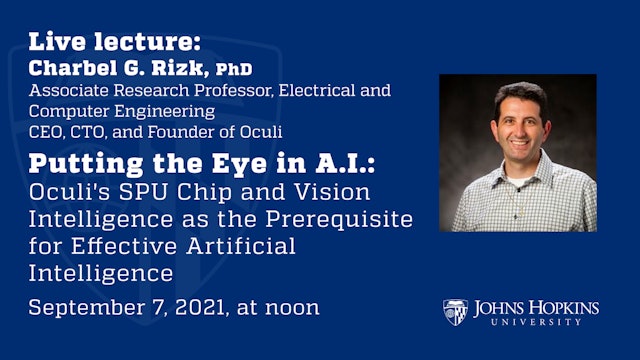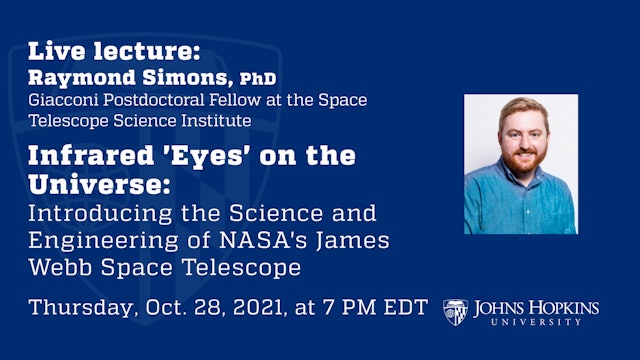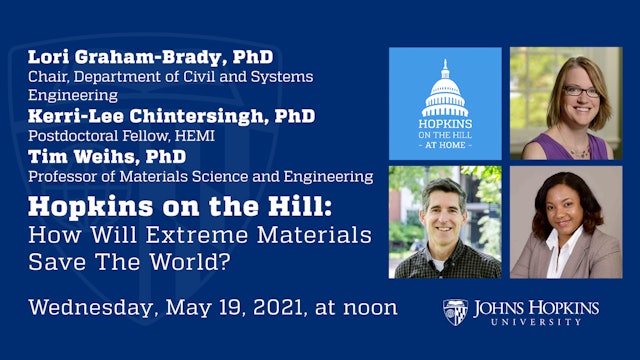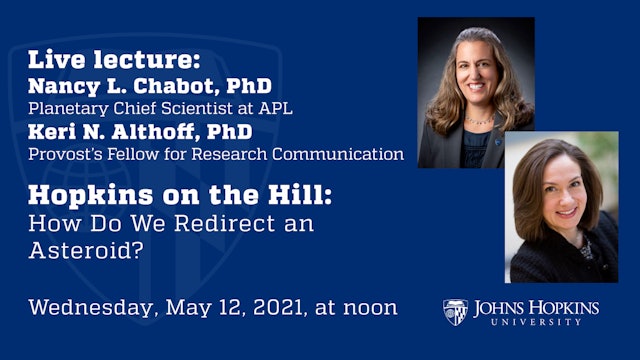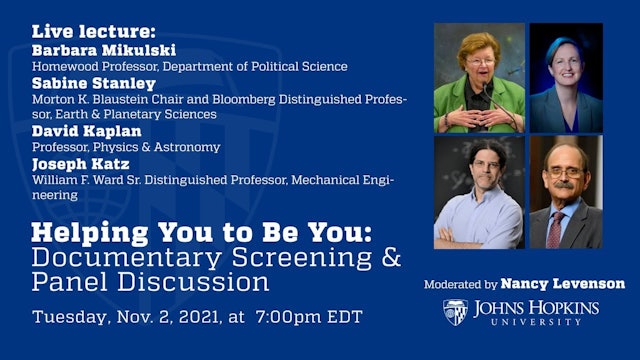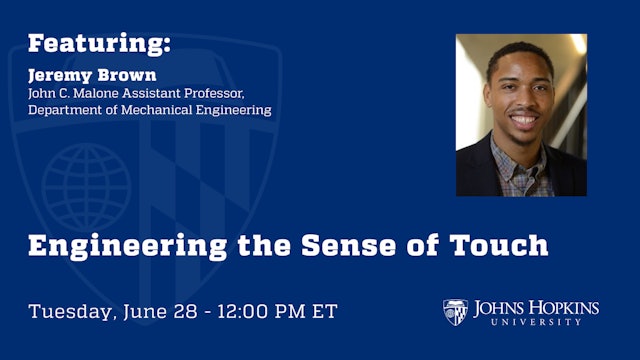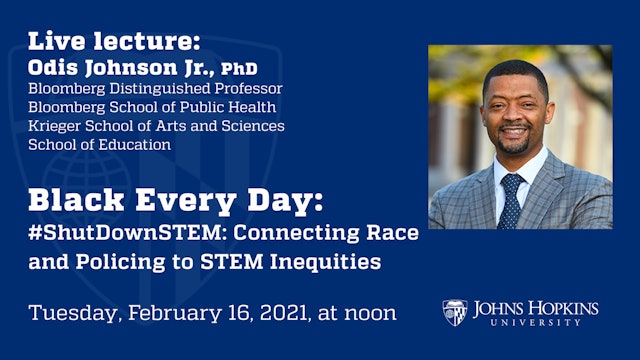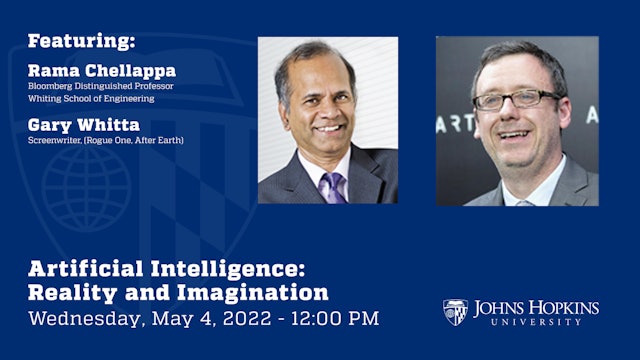Science, Engineering, & Technology
-
Biomedical Challenges of a Trip to Mars
Several agencies are planning to send humans to Mars in the next 10-20 years. Although humans have been venturing into space for almost 60 years, a Mars mission presents new and unprecedented challenges. Join Mark Shelhamer ScD, Associate Professor of Otolaryngology at the Johns Hopkins School of...
-
Unlocking the Potential of Post-Industrial Cities
In their new book, Unlocking the Potential of Post-Industrial Cities, authors Matthew E. Kahn, Bloomberg Distinguished Professor of Economics and Business and Director of the 21st Century Cities Initiative (21CC) at Johns Hopkins, and Mac McComas, senior program manager at 21CC, explore the recen...
-
The Open Source Software Revolution
Open source software has become a key driver of economic activity, community engagement, and societal impact. Consider that many of the tools used to analyze and trace Covid-19 are open source. The open source programs office (OSPO) has become a widely used construct in the private sector for man...
-
The Hidden Lives of Environmental Microbes
Did you know that the second largest source of biomass on the planet after plants is microorganisms? Too small to be seen with the naked eye, microorganisms and their unique capabilities make them a critical component of how ecosystems function. DNA sequencing, the technology that allowed us to s...
-
The (Un)known-(Un)knowns of COVID-19 Transmission - An Engineer's Perspective
COVID-19 spread across the world with a speed and intensity that laid bare the limits of our understanding of the transmission pathways of such respiratory diseases. After much confusion and misinformation, there emerged a consensus that airborne transmission from very small respiratory droplets ...
-
Statistical Approaches to Spaceflight Data
From the bioastronautics@hopkins Mini-Symposium. Speakers include Dr. Robert Reynolds, current visiting data scientist at NASA’s Human Health and Performance Directorate, and Dr. Robert Ploutz-Snyder, Assistant Dean of Research and Scholarship, at the University of Michigan School of Nursing. Plo...
-
Space for All – Opening Spaceflight to People with Disabilities
Hopkins at Home and Bioastronautics @ Hopkins, introduced and moderated by Dr. Mark Shelhamer (Director of the JHU Human Spaceflight Lab). This session will focus on making space travel inclusive for people with disabilities and features Dr. Sheyna Gifford, Sarah Hasnain, and Dr. Bonnielin Swenor...
-
Showcase Series: The Future of Artificial Intelligence
Brought to you by Hopkins at Home and the Office of Government, Community and Economic Partnerships.
Alexis Battle
Director, Malone Center for Engineering in Healthcare; Associate Professor of Biomedical Engineering and Computer Science.
Alexis Battle is an associate professor in biomedical en... -
Robots Doing Surgeries or Computers Guiding Surgeons Advances
There are several advances in the non-operative and operative care of patients with hip and knee problems. Technical and technological innovations have provided a cutting-edge to patients and providers alike. Savyasachi “Savya” Thakkar, M.D., Assistant Professor of Orthopaedic Surgery, leads a di...
-
Putting the Eye in A.I.
Charbel G. Rizk, Associate Research Professor at the Whiting School of Engineering, is revolutionizing the way machines see. As Founder and CEO of Oculi® - a deep tech startup – his team developed the OCULI SPU™ (Sensing and Processing Unit), a complete vision system on a single chip. Where trad...
-
NSA’s Involvement in the Design of DES
When the National Bureau of Standards (NBS) was tasked with developing a commercial encryption standard, they asked for help from the National Security Agency (NSA). Join Richard M. (Dickie) George, the Senior Advisor for Cyber Security at the Applied Physics Lab, to discuss the development of th...
-
Infrared 'Eyes': Introducing the Science of NASA's James Webb Space Telescope
The James Webb Space Telescope (JWST) is set to launch in December, and will revolutionize our view of the Universe and our place within it. JWST is NASA’s most ambitious and complex space observatory to date, carrying a mirror that is several times larger than the Hubble Space Telescope and a su...
-
Hopkins on the Hill: How Will Extreme Materials Save The World?
While the age of technology is exciting in its possibilities, we know that threats still exist: but science, and Johns Hopkins, are leading the way in protecting our armed forces and civilian populations from these threats. Join Tim Weihs (PhD, MS) and Lori Graham-Brady (PhD, MA) to see how Johns...
-
Hopkins on the Hill: How Do We Redirect an Asteroid?
The Double Asteroid Redirection Test (DART) is a focused spacecraft, designed to navigate to and impact an asteroid at a speed of 6.6 kilometers per second (roughly 15,000 miles per hour). It will be the first planetary defense test mission, demonstrating our capability to respond to a potential ...
-
Helping You to Be You: Documentary Screening & Panel Discussion
Helping You to Be You: Documentary Screening & Panel Discussion
-
Engineering the Sense of Touch
Jeremy D. Brown, assistant professor in the Department of Mechanical Engineering, is making significant strides in advancing the science of touch in human-robot interaction. Specifically, his research group, the Haptics and Medical Robotics (HAMR) Laboratory, seeks to generate and discover fundam...
-
Black Every Day: #ShutDownSTEM: Connecting Race and Policing to STEM Inequities
On June 10, 2020, researchers around the world observed the call to #ShutDownSTEM in support of the Black Lives Matter movement and efforts to address the systemic racism that ended the lives of Breonna Taylor and George Floyd. One might ask, “what does racism in policing have to do with STEM and...
-
Bioastronautics Mini-Symposia Series: Systems Medicine for Spaceflight
Please join us on Nov. 15, 2021, at 2 p.m. Eastern Standard Time, for the next in our series of human-spaceflight events from bioastronautics@hopkins.
This will be the first of an occasional series of mini-symposia, each approximately two hours long, with a keynote speaker, panel discussion, and...
-
Air Today, Gone Tomorrow: How Air Particles Impact Human Health
Each particle in the air we breathe has a history. The chemical composition of those particles provides clues to the sources and the potential impacts of those particles on human health and the climate system. Join this lecture with Dr. Peter DeCarlo, Associate Professor at Johns Hopkins Universi...
-
Artificial Intelligence: Reality vs Imagination
Long ago, in a galaxy far, far away….Movies like Star Wars and 2001 Space Odyssey showed us a future where droids are our partners, servants, and friends. Outside of the world on-screen, the field of Artificial Intelligence (AI) has overly promised and grossly under delivered for the last five de...
-
Artificial Intelligence: Living in a George Jetson World
Join us for an engaging panel discussion on Artificial Intelligence: Living in a George Jetson World moderated by Efrem Epstein, A&S '90 with digital transformation and artificial intelligence experts Alex Sharpe, Engr '95, Bill Kirst, A&S '00, Kate Sperber, A&S '95 and Dr. Charles Johnson-Bey...

